| Columns Retired Columns & Blogs |
Lipinski Sound L-707 loudspeaker Measurements
Sidebar 3: Measurements
I estimated the Lipinski L-707's voltage sensitivity at a high 90.3dB(B)/2.83V/m, which is to specification. However, the speaker drops below 4 ohms in the lower midrange and upper treble, reaching a minimum value of 3.35 ohms at 180Hz (fig.1). There is also a relatively tricky combination of 5.2 ohms and –40° at 87Hz, a frequency where music in general has considerable energy. A good amplifier rated into 4 ohms will be needed to drive these speakers to high levels, therefore.
Fig.1 Lipinski L-707, electrical impedance (solid) and phase (dashed). (2 ohms/vertical div.)
The traces in fig.1 are free from the small wrinkles and discontinuities that would imply the existence of cabinet resonances. However, a couple of strong modes could be found on both the sidewalls and the rear panel, at 465Hz and 555Hz (fig.2). While it is possible that these resonances are high enough in frequency to have no subjective consequences—LG noted no midrange congestion in his auditioning—I would have preferred not to have seen them, as they are very high in level. L-707 owners should experiment with using damping materials between the cabinet and the stand (see my article on this subject).
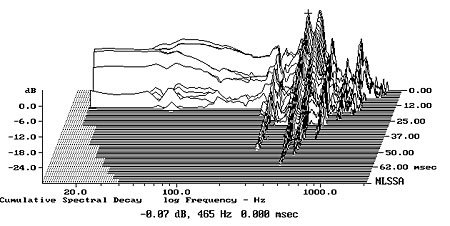
Fig.2 Lipinski L-707, cumulative spectral-decay plot calculated from the output of an accelerometer fastened to the center of the cabinet's side panel (MLS driving voltage to speaker, 7.55V; measurement bandwidth, 2kHz).
The single impedance peak in fig.1, at 62Hz, suggests that this is the tuning frequency of the sealed-box–loaded woofers. The woofers' response, measured in the nearfield, is shown to the left of fig.3. The broad, 3dB-high peak in the upper bass is entirely due to the nearfield measurement technique, which assumes a 2pi (hemispherical) environment; the L-707 is actually maximally flat down to 70Hz, with a slow 12dB/octave rolloff below that frequency. While this will not be a speaker anyone will choose for room-shaking low frequencies, it does offer quite good bass extension in-room, as LG found.
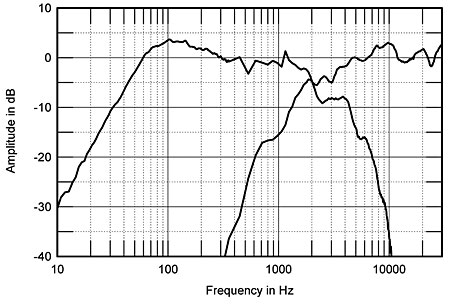
Fig.3 Lipinski L-707, acoustic crossover on tweeter axis at 50", corrected for microphone response, with the nearfield response of the woofers plotted below 300Hz.
The outputs of the woofers and the tweeter, taken in the farfield with the grilles over the woofers only, and leaving the tweeter embedded in its foam-lined recess, are shown to the right of fig.3. The crossover appears to be set around 2kHz, with fairly slow initial filter slopes. The woofers have a trace of unevenness evident in the upper midrange, which results—when the overall response is averaged across a 30° horizontal window centered on the tweeter axis (fig.4)—in a slight emphasis in that region. This is not a large enough extent to add coloration, but it will slightly emphasize recorded detail. Otherwise, the L-707's on-axis balance is superbly even, with excellent high-frequency extension.
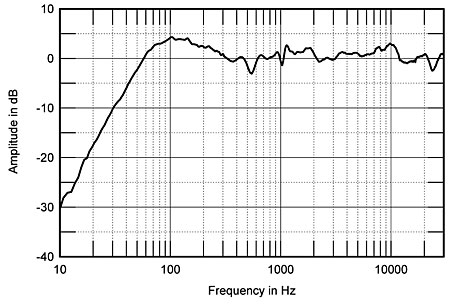
Fig.4 Lipinski L-707, anechoic response on tweeter axis at 50", averaged across 30° horizontal window and corrected for microphone response, with the nearfield response of the woofers plotted below 300Hz.
Despite its having woofers with quite large radiating diameters, the Lipinski speaker offers superbly well-controlled horizontal dispersion (fig.5), the uniformity of the "contour lines" in this graph correlating with the stable stereo imaging LG heard in his auditioning and indicating that the room's reverberant field will be as uncolored as the speaker's first-arrival sound. Unusually for a ring-radiator tweeter, the example used by Lipinski doesn't get quite as directional at ultrasonic frequencies as other such designs I have measured. However, in the vertical plane, the L-707's use of spaced drive-units extending quite high in frequency leads to significant off-axis irregularities (fig.6). Listeners need to place the L-707 on high enough stands that they sit within ±5° of the tweeter axis.
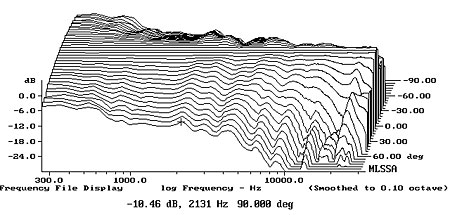
Fig.5 Lipinski L-707, lateral response family at 50", normalized to response on tweeter axis, from back to front: differences in response 90–5° off axis, reference response, differences in response 5–90° off axis.
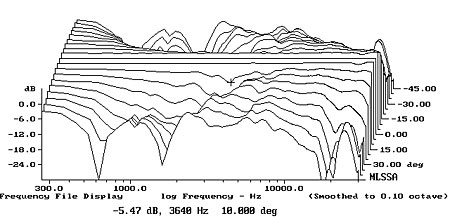
Fig.6 Lipinski L-707, vertical response family at 50", normalized to response on tweeter axis, from back to front: differences in response 45–5° above axis, reference response, differences in response 5–45° below axis.
In the time domain, the L-707's step response (fig.7) surprised me by indicating that the tweeter is connected in inverted acoustic polarity to the woofers. Despite the setback of the tweeter subbaffle and the low-order crossover filters, the speaker is not time-coincident. This was confirmed by looking at the step responses of the individual drive-units (fig.8). But what is important to note from this graph is that the overhang of the tweeter's inverted step (red trace) blends smoothly into the woofer's step (blue). This time coincidence correlates nicely with the excellent frequency-domain integration seen in fig.4.
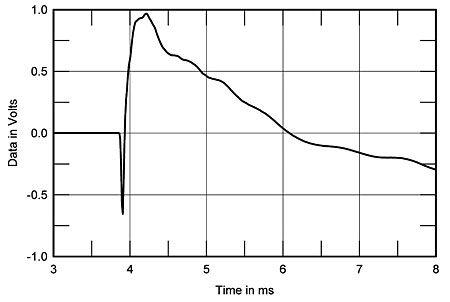
Fig.7 Lipinski L-707, step response on tweeter axis at 50" (5ms time window, 30kHz bandwidth).
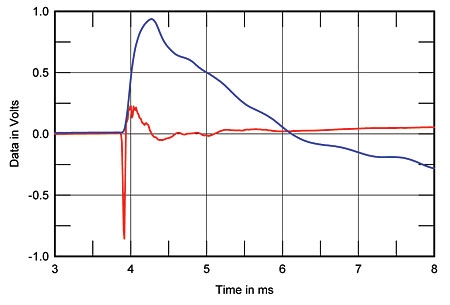
Fig.8 Lipinski L-707, step responses on tweeter axis at 50" of tweeter (red) and woofers (blue). (5ms time window, 30kHz bandwidth.)
Finally, with the exception of some delayed energy in the upper midrange associated with the unevenness of the woofers' output in this region, the L-707's cumulative spectral-decay plot (fig.9) is characterized by an astonishingly clean, quick decay of the transient sound. This is simply superb measured performance.
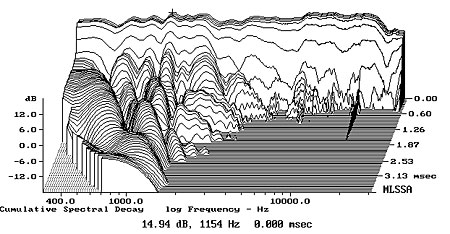
Fig.9 Lipinski L-707, cumulative spectral-decay plot at 50" (0.15ms risetime).
Following my experience with the Lipinski Sound speaker in my own room, and listening to a pair playing some of my own recordings in Ray Kimber's studio in summer 2004, I share LG's enthusiasm for the L-707.—John Atkinson
- Log in or register to post comments




































